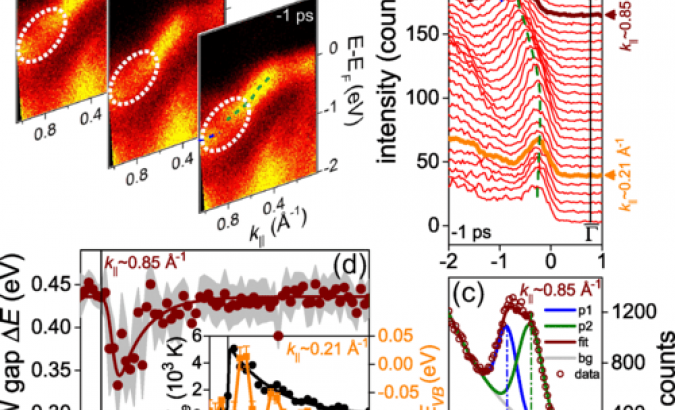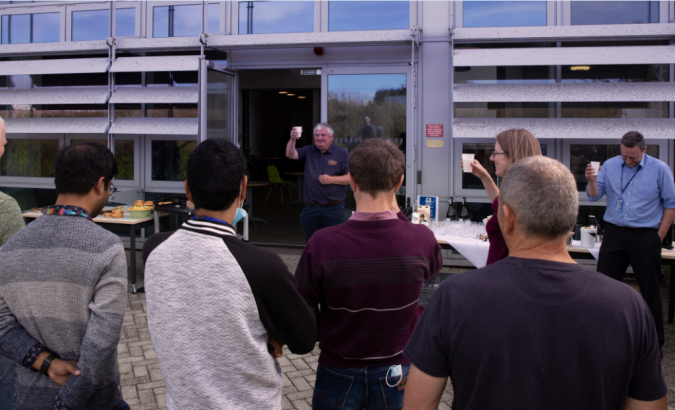Solar energy is foreseen as a promising solution to the climate crisis. A renewable resource, many technologies harvest solar energy directly for use in homes, businesses, schools and hospitals, due to its highly abundant energy content. Capturing only 0.04 % of the 36,000 terawatt (TW) irradiation that arrives to the Earth’ surface would be enough to supply the world’s energy demand until 2050.
Amongst the solar fuels, H2 is one of the most attractive due to its high mass-energy content which is up to three times higher than conventional fossil fuels, when used in direct combustion. H2 is mainly produced by steam-methane reforming. By using the trifecta of light, water, and a catalyst (TiO2), Honda & Fujishima photoproduced H2 via water splitting in 1972. Water splitting (WS), often referred as “artificial photosynthesis”, corresponds to the dissociation of water into H2 and oxygen. Inspired by natural photosynthesis, the great advantage of lies in is its low cost H2 generation (energy carrier) while CO2-free emissions. Five decades of active research has followed since Honda and Fujishima’s ground-breaking findings, often referred by experts as one of the holy grails in physical chemistry.
Unfortunately, researchers have not yet developed photo catalytically active materials from cheap, abundant sources with the required solar-to-hydrogen energy conversion capacity nor have they constructed a standard photochemical reactor of efficient photonic/heat/mass transfers with low losses. Therefore, the rational design of advanced photocatalytic systems has been the centre of attention for several decades.
A combined effort led by the University of Paris Saclay, together with researchers from HarwellXPS, based at Research Complex at Harwell, Universities of Granada, Camerino, Strasbourg and Southampton, UCL and STFC have designed a compact photoreactor for automated H2 evolution reaction in the presence of a sacrificial agent with frontal irradiation (engineering of chemical processes) and synthesis, characterization, and performance of TiO2 Schottky junctions, using Pd, Pt, or Au nanoparticles to validate the operation of the reactor. This exciting new development in materials science is hoped to further stimulate the design of novel compact reactors and accelerate the technological readiness level (TRL) development for photo(electro)catalysis. HarwellXPS provided key insight into the electronic, chemical and material properties of the titania-based photocatalysts, enabling correlation between material character and hydrogen production efficacy. This research effort has since resulted in a number of long running partnerships between HarwellXPS and the external team members, particularly the Universities of Paris Saclay and Strasbourg – due to the world leading capabilities and knowledge of surface science within HarwellXPS.
The H2 production capabilities in this work are significantly higher than currently established systems, putting into evidence that the geometry and reactor configuration brings the system one step closer to the ideal heat/mass/photonic profiles required for commercial viability, with low losses. The Schottky composites allow building novel structure–activity correlations in combination with the reactor. The research highlights the need for further development of compact and portable reactors to allow in-situ testing and coupling with key techniques such as XPS and XAS (both in development at HarwellXPS), TEM, XRD and others, along with the reporting of homogeneous criteria (IUPAC) for the accurate comparison of efficiencies across different studies, setups, and groups. This new photoreactor could potentially be the benchmark to foster further progress in process and chemical engineering, accelerate the TRL, and as a strategy to overcome current limitations in scaling up photocatalysis – bringing the potential for widespread hydrogen fuels closer to the global market.
A compact photoreactor for automated H2 photoproduction: Revisiting the (Pd, Pt, Au)/TiO2 (P25) Schottky junctions, P. Jimenéz-Calvo, M. Muñoz-Batista, M. Issacs, V. Ramnnarain, M. A. Muñoz-Marquez, X. Li, D. Ihiawakrim, G. Teobaldi, M. Kociak and E. Paineau, Chemical Engineering Journal, 459, 141594 (2023).








